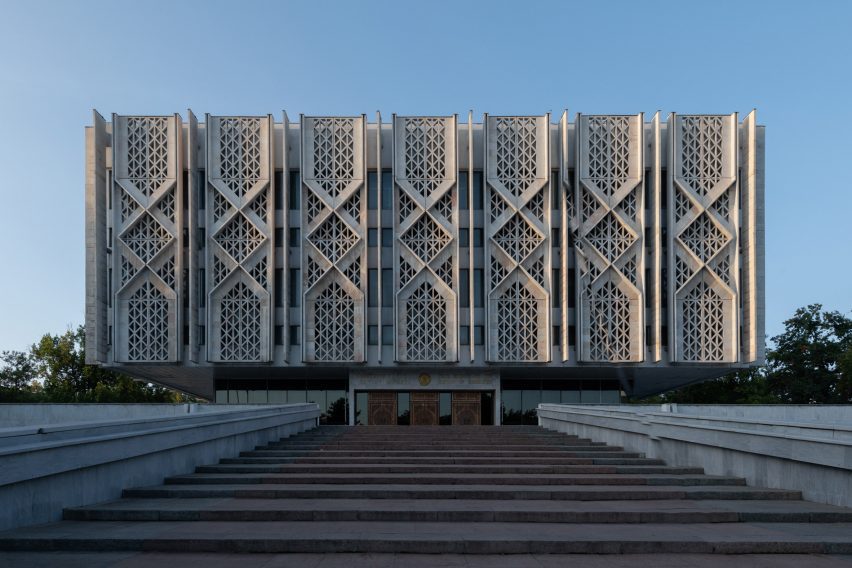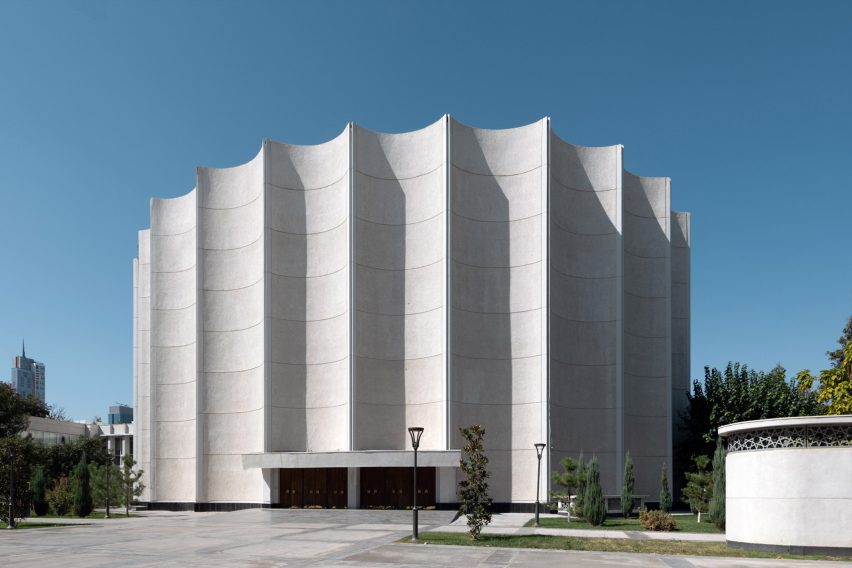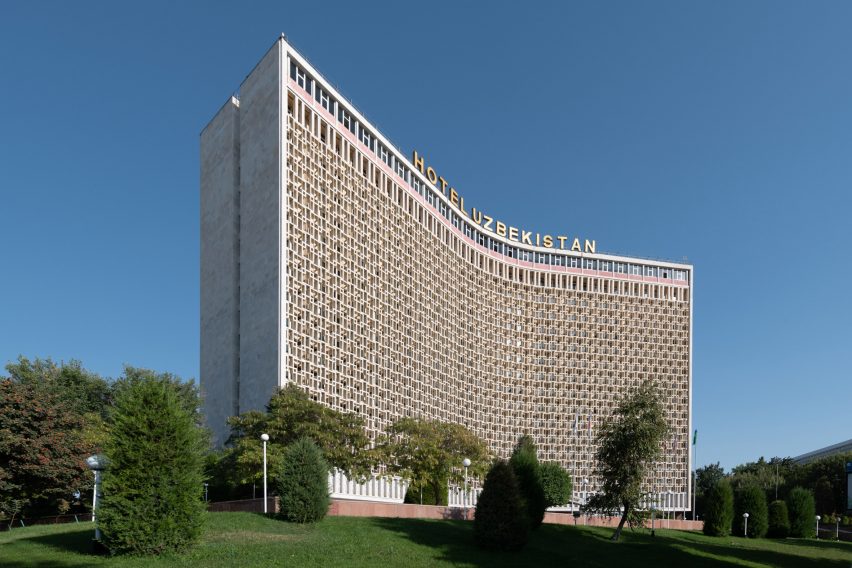
Preserving Tashkent's modernist architecture an act of "cultural diplomacy" says cultural foundation's head
Conserving Tashkent's modernist architecture is a way of boosting the city's international profile, Uzbekistan Art and Culture Development Foundation chair Gayane Umerova tells Dezeen in this interview.
The Uzbekistan Art and Culture Development Foundation is leading the preservation of more than 20 impressive Soviet-era modernist buildings in the Uzbek capital, Tashkent.
"The foundation was set up for cultural diplomacy"
The conservation effort forms part a strategy led by president Shavkat Mirziyoyev to build awareness of the central Asian country's cultural assets beyond the tourist hotspots of Bukhara and Samarkand.
"The foundation was set up for cultural diplomacy in a way, because we were formed by the president's initiative in 2017," Umerova told Dezeen.
"At the time, the president realised that there wasn't a lot of information about Uzbekistan culture overseas, and it was mainly connected to the historical cities – Bukhara and Samarkand."
The Uzbekistan Art and Culture Development Foundation, which is part of the government, was established following Mirziyoyev's election in 2016 with the aim of protecting and promoting the country's art and culture.

However, the organisation only took a serious interest in Tashkent's modernist architecture after the iconic House of Cinema was threatened with demolition.
"The foundation was not formed to secure or protect any building or heritage – we started with an arts and culture agenda," explained Umerova.
"But, at this time [around 2017] a vast number of investors were coming to the country and there were developers that started a building boom," she continued.
"We found out from our team and from the people around us that a building was about to be demolished which was quite iconic – the House of Cinema."
"People were really feeling that something wrong was happening"
Although the foundation did not succeed in saving the cinema, which was demolished in early 2018, the discussion around it led to a renewed, government-backed interest in Tashkent's Soviet-era modernism.
"People were really feeling that something wrong was happening, but at the time, it was already [too] late to save this building," said Umerova.
"We didn't really feel empowered to do it, because we were not really part of this system, we were not used to construction, and didn't have the mechanisms to do anything."
Following the demolition, the foundation set about establishing the systems and mechanisms needed to protect the city's other, potentially under-threat, modernist buildings.
This led to the Tashkent Modernism XX/XXI research and preservation project, led by Milan-based architecture studio Grace, academic Boris Chukhovich, the Politecnico di Milano and Laboratorio Permanente.

The team carried out a survey of the city's Soviet modernist buildings and has selected 24 key buildings that will be conserved.
Tashkent's modernist architecture was the focus of the recent Where in the World is Tashkent conference, with Dezeen rounding up 10 key buildings following the event.
"We used to be the capital of Central Asia"
As Tashkent was one of the most populated and significant cities within the former Soviet Union, it contains numerous municipal, cultural and residential buildings from the communist era.
"We used to be the capital of Central Asia when we used to be Soviet and this is why there are a lot of cultural institutions, said Umerova.
"[The] majority of these buildings are modernist. It was seen as a very cultural city, and I think we've lost that for the past 30 years."

Following the collapse of the Soviet Union, Tashkent has become less prominent in the region – and the foundation hopes it can use the modernist buildings as part of a "rebranding" effort for the city.
"We are not a tourism entity," explained Umerova. "But for us it's important to that the country is known overseas, and this is basically how cultural diplomacy and soft power all come together."
"So as more people know about these buildings, then the conditions are good for people to visit, it's a benefit for us."
"It's important for us to create awareness"
The foundation has control over many of the 24 buildings that have designated for conservation, either through direct ownership or indirectly, in the case of those owned by other government bodies.
It is creating a strategy to reuse these buildings as well as influencing the development of the structures that are privately owned.
As part of this plan it is exploring a UNESCO listing bid for a selection of the city's modernist buildings.
"It's important for us to create awareness and UNESCO is the best, basically, for that," Umerova said.
The photography is by Alexey Narodizkiy. The portrait is by ACDF.
Dezeen In Depth
If you enjoy reading Dezeen's interviews, opinions and features, subscribe to Dezeen In Depth. Sent on the last Friday of each month, this newsletter provides a single place to read about the design and architecture stories behind the headlines.